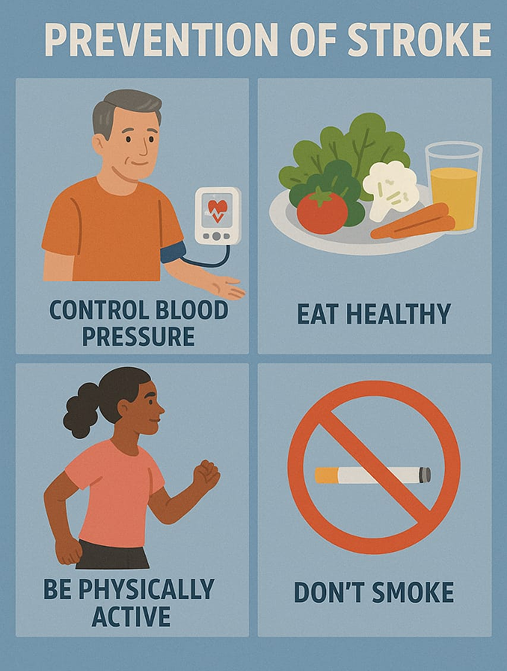How Stroke Impacts Your Body
Recognizing common symptoms can help save lives—know the signs and act fast.

B.E. F.A.S.T – Recognize Stroke Symptoms Early
When it comes to stroke, every second counts. The BE FAST acronym helps quickly identify the warning signs: Balance issues, Eye changes, Face drooping, Arm weakness, Speech difficulties, and Time to call emergency services (112). Immediate action can save lives and reduce the risk of long-term disability.

Understanding Stroke and Its Warning Signs
Stroke occurs when the blood flow to a part of the brain is interrupted, leading to potential brain damage or death. Most strokes are ischemic, with thrombotic and hemorrhagic types also occurring. Recognizing early signs like facial drooping, a weak hand grip, speech issues, and headaches is crucial. Prompt and accurate diagnosis using clinical evaluations and neuroimaging can significantly improve treatment outcomes.

Understanding How Stroke Affects the Body
A stroke can have a wide-ranging impact on the body, often striking suddenly and affecting different physical and mental functions. As shown in the image, common symptoms include confusion, severe headache, face drooping, blurred vision, trouble speaking, paralysis, weakness, and loss of coordination. Recognizing these signs early is crucial for timely medical intervention and better recovery outcomes.

Simple Ways to Prevent a Stroke
Taking steps to prevent a stroke is easier than you might think. This image highlights key lifestyle habits that reduce stroke risk: managing blood pressure, eating a healthy diet, staying physically active, and avoiding smoking. Making these small but powerful changes can greatly improve your overall health and help keep your brain and body protected.
Two Main Types of Stroke

Strokes are classified into two major types: Ischemic and Hemorrhagic. An Ischemic Stroke occurs when a blood clot (thrombus) blocks blood flow to the brain, causing oxygen deprivation (anoxia). A Hemorrhagic Stroke happens when a blood vessel in the brain ruptures, leading to internal bleeding (hemorrhage). Understanding these types is crucial for timely diagnosis and appropriate treatment.
TOAST Classification of Ischemic Stroke


